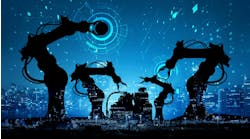By Michael Naber, founder & CEO of Simerse
Manufacturing is prone to human error, which can lead to defective products and wasted materials. Artificial intelligence (AI) inspection techniques can reduce manufacturing waste and increase quality control through detection of anomalies on a manufacturing line. But you have to know how to do it properly. Let’s explore…
About manufacturing waste
In the automobile manufacturing, each car can have 100 components that are made of multiple materials, which means there are plenty of opportunities for human errors or defects to go unnoticed during production.
Defects can cause waste at several points in the manufacturing process. A defective material itself (such as a section of steel) must be discarded or otherwise repurposed. Small defects can cascade into a larger defects, multiplying the cost to the manufacturer. For these reasons, manufacturers have sought to install quality-inspection systems in their factories—think machine-vision systems reliant on classical image-processing techniques in which quality control is performed by hard-coded algorithms that are too inflexible for many industrial deployments.
Techniques like this often fail to detect manufacturing defects. Moreover, these machine-vision systems can be quite expensive, reducing the return on investment. Therefore, it is advisable to look for other solutions.
How AI inspection reduces waste
Modern artificial intelligence-inspection methods can be used to detect manufacturing defects more accurately than traditional image-processing methods.
One of the advantages of AI manufacturing inspection is that systems can be trained to identify manufacturing defects by leveraging large datasets of manufacturing examples—companies can train their own classifiers to identify manufacturing defects on a production line, which reduces waste by automatically generating alerts whenever manufacturing anomalies occur and allowing personnel to deal with anomalies before they damages other products or wastes more materials.
In many cases, manufacturers opt to work with an AI defect-detection vendor to implement automatic quality control. By either developing AI in-house or working with a vendor, manufacturers are generally able to reduce waste by implementing AI inspection.
And while AI-inspection technologies are relatively new for manufacturing quality control, they have already surpassed classical image-processing techniques in terms of accuracy. In the near future, AI inspection will become a staple for manufacturers looking to improve quality and reduce manufacturing waste.
Factors that affect ROI for manufacturers
Several factors can affect the purchasing decision for a manufacturer. In general, the following factors should be considered when making a decision about a new system:
- The cost of the machine-vision system
- The amount of downtime of manufacturing lines
- The quality of products that are acceptable to the customer
Manufacturers must also weigh the potential return on investment for machine-vision systems; they need to fully understand the benefits and costs of deploying a machine-vision system. These benefits can include:
- Increased yield—A machine-vision system can identify manufacturing defects, which can lead to an increase in the yield or number of good products coming off the manufacturing line.
- Reduced manufacturing waste—By identifying and correcting manufacturing defects, a machine-vision system can reduce manufacturing waste
- Increased efficiency—A machine-vision system can speed up the manufacturing process by automating tasks that are currently manual.
And let’s also consider costs to be considered when deploying a machine-vision system:
- The cost of the machine-vision system itself
- The cost of installation and integration
- The cost of training operators to use the machine-vision system
- The cost of maintaining the machine-vision system over its lifetime
Sustainability
Beyond the purely financial benefits and costs of machine vision, there are also broader trends in sustainability to consider. As governments and customers look to purchase or mandate more “green” products, an investment in efficient manufacturing makes more sense. AI is a technology that can enhance sustainability while offering an attractive ROI, and therefore it should be worthy of significant consideration by manufacturers.


